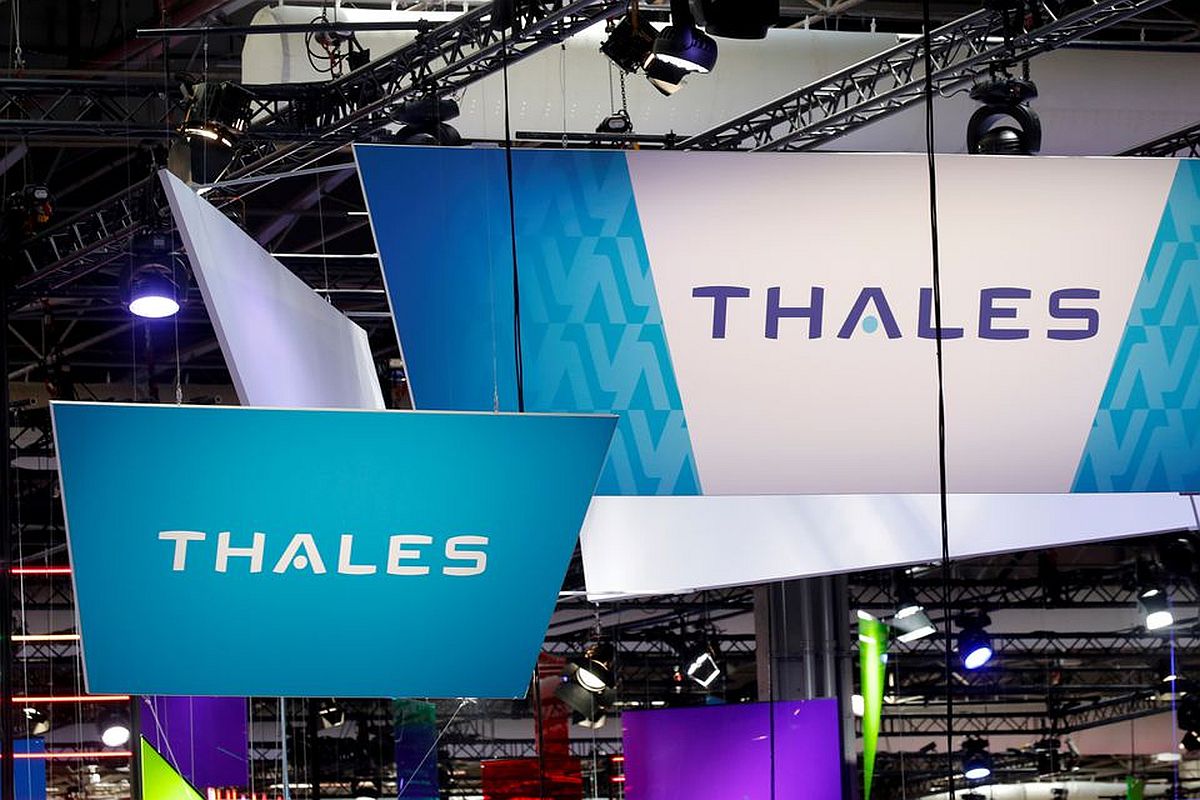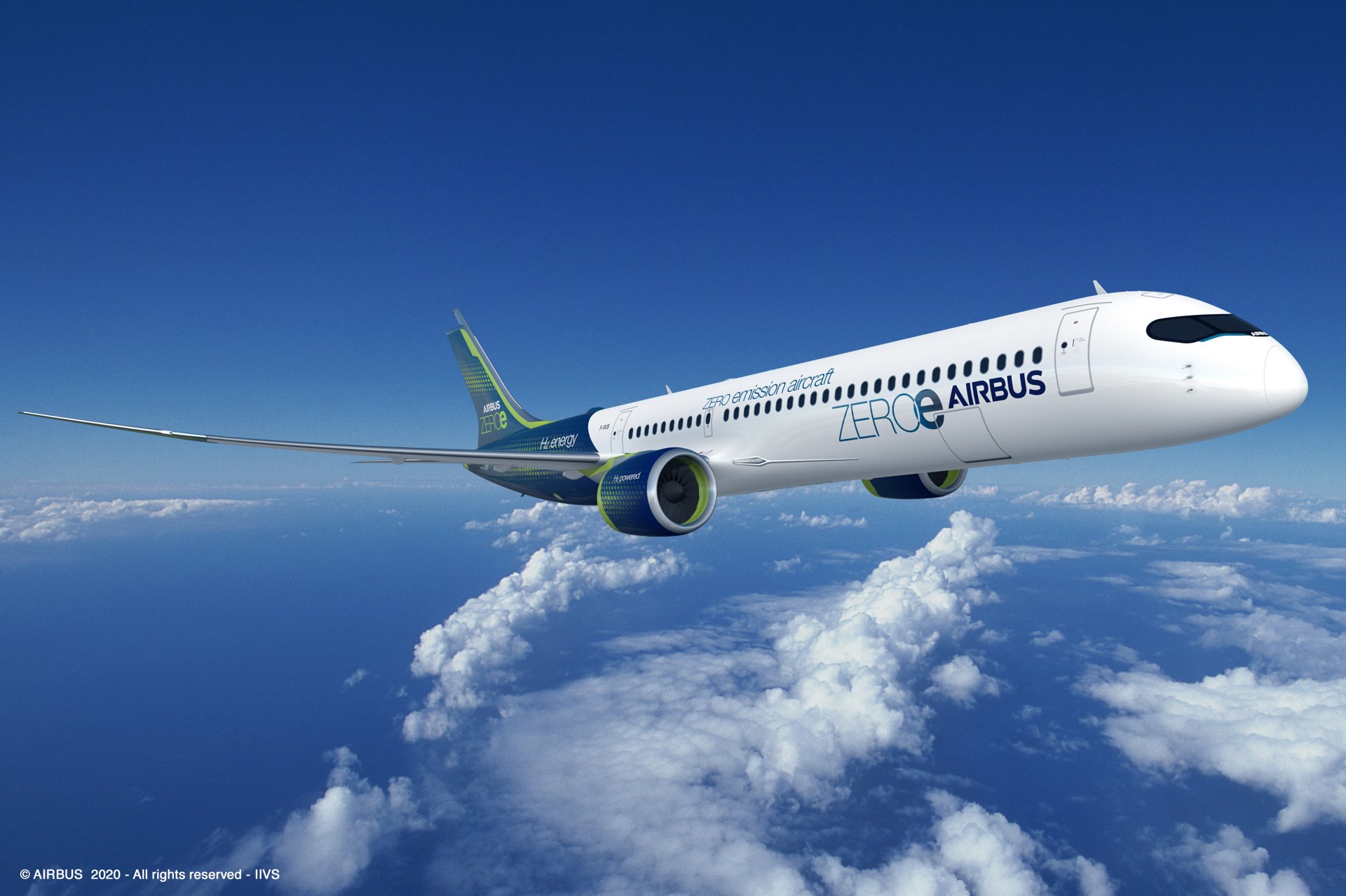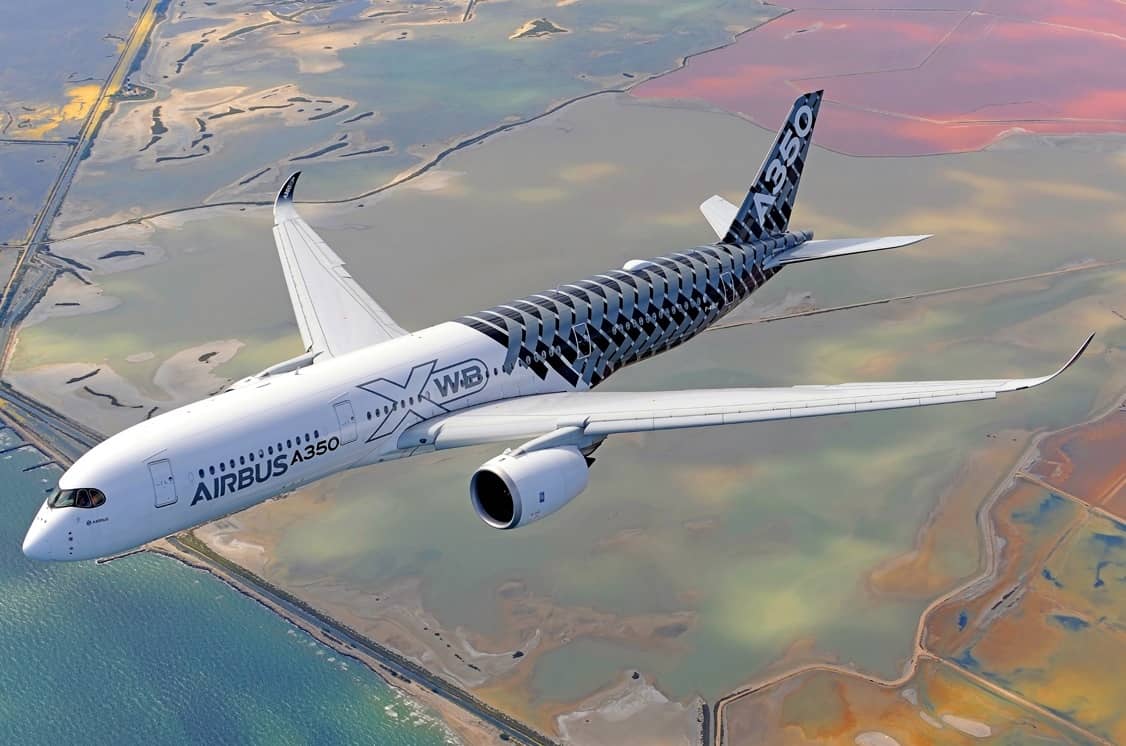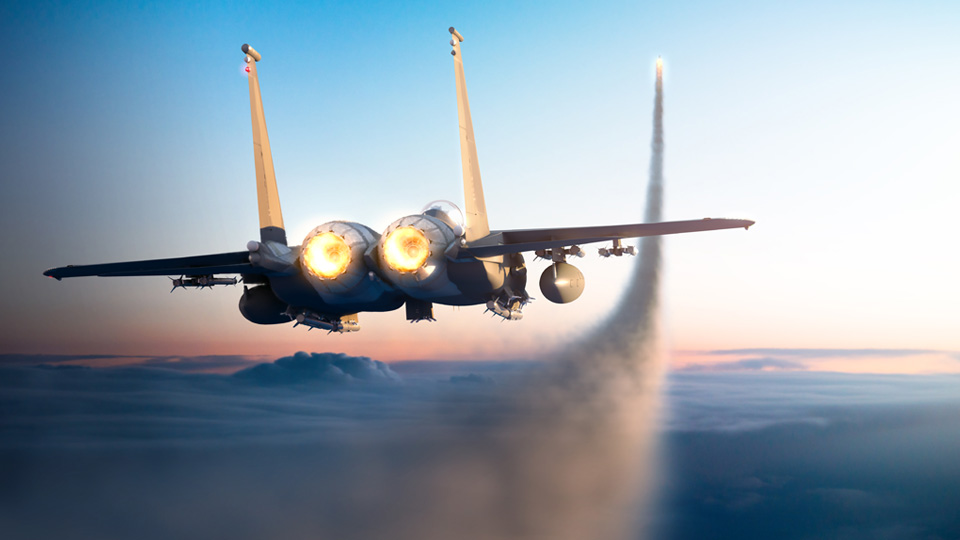French aerospace major Thales betting big on India - key take-away(s)
Prashant-prabhakar
22 Mar 2022

The French Aerospace entity, Thales, is reportedly chasing major plans of expanding operations in India.
The company has already started chalking out plans to set up a Maintenance, Repair, Overhaul (MRO) organization in India in a bid to support Indian carriers- many of which rely on the company for avionics troubleshooting and support.
Representative | Defence XP
We are looking to set up an MRO, so that they don’t have to travel to West Asia or Singapore. Final decision is yet to be taken, but this is a clear intent showing the growth potential in India that we are looking to set up a sub-centre here.said Yannick Assouad, executive vice-president, avionics at Thales, who was on her maiden visit to the group’s India office at Bengaluru since taking charge
Yannick Assouad | L'Usine Nouvelle
Thales would be the second French Aerospace major to have expressed an interest in investing and scaling a major aviation infrastructure in the country.
Earlier, Safran S.A., another French aircraft engine manufacturer, had zeroed in on three places- Jewar, Nagpur, and Hyderabad, for the establishment of a new aircraft engine MRO unit, to cater to its customers.
It is to be noted though, that while Thales is planning an overhauled unit for major avionic components, Safran is targeting an engine MRO unit.
The A320 family of aircraft- one of the most popular among Indian operators, features numerous components, the technical support of which is provided by Thales. Apparently, the company predicts an exponential increase in the aforementioned aircraft type which could translate to an increase in support services of avionics in the fleet.
Given the growth of the economy in this country, more and more people will be travelling and consequently there will be an increase in fleetsaid Assouad
Given its expertise in aircraft avionics, Thales is also reportedly trying to bag a contract from Tata Group for the refurbishment of In-flight Entertainment (IFE) in Air India’s fleet.
In-Flight Entertainment (IFE) | Representative | TripSavvy
The IFE that Air India is currently running is of Panasonic, which is really old. So a new IFE contract is probably a must. Not only that, we see opportunity in IndiGo’s Airbus A321 XLRs which will fly long-haul, for which it is sure it will be fitted IFE.said Assouad
Furthermore, she also added that Thales will pitch its counter-drone technologies to government organisations in India, pointing to the growing use of drones in the country.
The use of drones will only increase if the operation of drones is safe in the skies. Thales has a solution in electromagnetic jammer which can be used for counter-drone techshe said
SOURCE(s)
COVER: Rediffmail
Read next
The European plane manufacturer, Airbus, is reportedly in talks with the TATA group and other Indian carriers regarding the procurement of its wide-bodied A350XWB planes - a report which was confirmed by Remi Maillard - president and MD of Airbus India & South Asia, today.
Aviation Voice
We are obviously in talks with all airlines. The new owner of Air India — Tatas — are existing customers of Airbus. Tatas have Vistara and AirAsia India with them, as we know. We have developed long standing, trustful and respected relationship with the Tata Group.Remi Maillard stated at a press conference
Remi Maillard | Social News XYZ
Tatas are Airbus's partner in the defence business too-Maillard said further.
Representative | Zee News
We are industrializing and manufacturing together our C-295 military transport aircraft for the Indian Air Force. Of course, we will be privileged to continue supporting the ambition of the Tata Group in the aviation sector across all the complete spectrumMaillard
With the acquisition of Air India, the TATAs now have four entities under a single umbrella- including Air India Express, Vistara and AirAsia India.
According to Maillard, the fleet of wide-body aircraft in India has remained constant for the past twenty years in comparison to the single-body fleet, which magnified by as much as six times in the same period. Currently in India, only Vistara and Air India have wide-bodied aircraft in their fleet.
The Airbus A350 is a long-range, wide-body airliner, with larger fuel tanks that allow them to travel long distances as compared to narrow-bodied aircraft like A320NEO. Powered by two Trent XWB turbofan engines that result from a very close collaboration between Airbus and the powerplant’s manufacturer, Rolls-Royce, the aircraft can travel above 8,000 nautical miles, with a flying time of approximately 18 hours in one flight.
Trent XWB Turbofan | Representative | Aerospace Technology
According to Remi Maillard, Airbus is aggressively confident when it comes to the long-haul international market out of India.
We believe the kind of revolution we have witnessed in domestic traffic in the last 20 years will now happen in the long haul market. The new generation aircraft, the A350, will be the trigger for this revolution in the international long haul market.Maillard
The A350XWB aircraft features 300 to 410 seats in a three-class configuration. With full LED mood lighting and larger overhead bins, it has the quietest cabin and 25 per cent less fuel consumption among all the wide-bodied aircraft.
SOURCE(s)
COVER: Magzter
Read next
If reports are to be believed, Boeing has obtained a mandatory licence from the US government for the discussion of a possible F-15 sale with India.
This has been confirmed by Mr Pratyush Kumar, who has been associated with the induction of multiple Boeing platforms into India’s military, including the P-8I Poseidon maritime aircraft, the C-17 Globemaster III heavy-lift transporter, the Apache AH-64E attack helicopter and the Chinook CH-47F heavy-lift chopper.
Boeing F-15EX | Boeing
This also comes as welcome news for the Indian Air Force, which is currently in the process of acquiring 114 multi-role combat aircraft (MRCA) from the global defence market.
Pratyush Kumar | Business Today
Reportedly, the Eagle-II F15EX will be going head-on against seven other combat fighters in the battle for the Indian MRCA tender.
Back in 2007, the Indian Air Force had the option of choosing between four twin-engine fighter crafts, namely- Boeing’s F/A-18E/F Super Hornet; Dassault’s Rafale, Eurofighter GmbH’s Typhoon, and Russia’s RAC MiG-35. Additionally, two single-engine aircraft options were also put forward- Lockheed Martin’s F-16 Super Viper; and Saab’s Gripen E/F.
Fast forward 2019, the tender saw the arrival of two more big, twin-engine fighters, vying for the contract- the F-15EX Eagle-II and Russia’s Sukhoi-35.
General overview of the F-15 EX Eagle II
Touted to be the world’s fastest (Mach 2.5, or 3,100 kilometres per hour) and most heavily-armed (payload of 13.6 tonnes, or 30,000 pounds) fighter, the Eagle II has the longest strike range (1,200 nautical miles or 2,222 kilometres) and its combat resume boasts of 104 kills in air-to-air combat without suffering a single loss.
1. Enhanced survivability
With advanced radars and sensors, the fighter craft brings in fully integrated electronic warfare to combat new and emerging threats.
2. Unparalleled weapons carriage
Features the ability to carry hypersonic weapons, which, otherwise cannot be carried in internal bays.
3. Enhanced mission management
Features a 21st-century cockpit with real-time access to battleground information, thereby enhancing pilot's understanding of the environment.
4. Rapid capability insertion
Features a flexible and Open Missions Systems Architecture wherein rapid digital technology can be integrated for future growth and provide maximum interoperability.
https://www.youtube.com/watch?v=yTt_TJo9EF4
The F-15EX induction ceremony | Boeing | Youtube
The club of existing F-15EX operators includes the US, Israel, Japan, Singapore, South Korea and, most recently, Qatar.
Apparently. the design of the fighter has been customized to counter possible threats from China which include- hypersonic, re-targetable, long-range missiles and advanced “early warning and control” (AW&C) aircraft that can observe low-flying fighters at longer ranges.
Kumar describes Eagle-II as “the ideal high-end fighter for the high-end fight".
These are the general specifications of the fighter craft model although India is yet to make a call on the final specifications it would like to be featured on the fighter craft.
India needs to relook at their force structure in the light of Rafale and Tejas orders. If the gap is at the high performance end, the F-15EX could be a fit. But these are early days.A Boeing official said
SOURCE(s)
COVER: Boeing
Read next
About 1,700 aircraft maintenance technicians working with a company that handles maintenance and repair jobs for private carrier Air India have gone on an indefinite 'tools down agitation' strike, which began at 9 AM on Tuesday, March 15.
Air India flights from Delhi to Kathmandu, Siliguri, Jabalpur, Bhubaneshwar, Kolkata and Chennai have been delayed, while a flight to Dehradun and one from Nagpur have been cancelled, said sources. A statement from Air India is awaited.
Currently, engineers working for the said company have been handling the job. But the technicians employed with government-owned Air India Engineering Services Ltd (AIESL) make up for about 60% of its workforce and so flights would be hit.
Air India's 1700 technicians on strike, demanding a pay raise
The ongoing 'tools down agitation' is privatized airline Air India's first experience with labour-related strife. The said technicians, on a fixed-term contract with AIESL, had earlier threatened a 'tools down agitation’ across the country in January and then again in February.
Both the time, negotiations were on with the management in presence of the labour commissioner and the agitation was postponed.
Among the jobs, these technicians handle for Air India are aircraft fueling, readying the aircraft for departure, marshalling, maintenance work etc. Their demands include salary revision, employment contract renewal, the inclusion of dearness allowance etc.
Their demands include salary revision, employment contract renewal, the inclusion of dearness allowance etc.
The striking technicians are employed on a 'fixed-term contract' with Air India Engineering Services Ltd (AIESL), a government-owned company, which was formerly the engineering subsidiary of Air India. AIESL was not part of Air India's disinvestment deal by the Centre last year.
In the evening, AIESL retaliated by sending termination notices to a few technicians who were on strike. "Your services are no longer required by the company and your employment contract stands terminated with immediate effect from March 15, 2022," the letter said.
“We want salary based on 'equal work, equal pay. Our salaries should be on par with that of service engineers of Air India because our job profile, qualifications etc are the same,” said a technician, requesting anonymity.
AIESL was not part of Air India's disinvestment deal by the Centre last year.
“But our salary is INR 25,000. But since January, we have been receiving a salary of INR 21,444. Among the deductions made were those for medical facility and INR 1100 that AIESL has been deducting since May 2020 as part of economic measures,” he added.
In January, the technicians had written to the AIESL management with the list of demands, threatening the tools down agitation from January 17.
As conciliation proceedings under the assistant labour commissioner commenced between the technicians and the AIESL management, the agitation was postponed. A similar round of talks happened after they threatened to go on strike on February 7, following which the agitation was postponed.
Read next
The Jet Age is defined as a period in history characterized by the advent of aircraft powered by turbine engines and the associated social changes it brought about.
Representative | Stern
No other invention in history revolutionized travel as much as the jet engine did, in comparison to the iconic "wheel".
A brief history
The term "Jet Age" was coined for the first time in the late 1940s. Jet engines were more reliable, faster and provided a greater range and fuel efficiency than their piston counterparts and this practically made transcontinental and intercontinental travel possible.
The British de Havilland Comet was the first jet airliner to fly (1949), the first in service (1952), and the first to offer a regular transatlantic service (1958). The D.H.106 prototype-with its four Frank Halford-designed de Havilland Ghost engines buried in the wings made a beautiful maiden flight.
D.H.106 prototype | Pinterest
The second prototype of the Comet flew in late 1950, and the first production version, registered G-ALYP, in January 1951. BOAC operated the world’s first jet-powered passenger flight from London to Johannesburg, South Africa on May 2, 1952, and it was an instant success.
Although making a massive impact on its initial entry into service, the Comet soon lost its lustre after a series of crashes that marred its reputation.
The first fatal Comet accident inline service was to BOAC’s Flight 783, soon after take-off from Dum Dum Airport, Calcutta (now Kolkata), India on May 2, 1953. The aircraft, registered G-ALYV, appeared to break apart in mid-air, and the subsequent inquiry found the probable cause to be “Structural failure of the airframe during flight through a thunder squall.”
BOAC’s Flight 783 that crashed near Calcutta after a structural failure | Pinterest
The dawn of Jet Age in India
The delivery of a Boeing B707-400 from the Boeing factory in Seattle to Santa Cruz in Mumbai, via London, heralded the dawn of the Jet Age in India. Before Boeing became a household name, the UK, France, and Russia had developed their jet-powered civilian planes, although none had a significant impact on the Jet Age, the way 707 did.
Air India Boeing B707-400 | Representative | Wikimedia Commons
The pairing of Air India and Boeing 707 was touted to be one of the most successful during its time as quite apparently, they complimented each other well when it came to hospitality and technology.
The iconic Boeing B707, registered as VT-DJJ, took off from Seattle and made the long flight to London, after a brief halt at New York. The flight crew consisted of Boeing’s chief test pilot for the Boeing 707-Tex Johnston, along with Air India chief pilot Adi Gazdar, Boeing flight instructor Bob Mattison and flight engineer instructor Dick Smith.
The first Air India crew to fly India’s first commercial jet plane | Bandra Buzz
At London, the Chairman of Air India and India’s first pilot, JRD Tata, as well as other dignitaries and guests, joined in. JRD Tata commandeered the B707 as the aircraft made its way to Bombay.
The B707 touched down at Santa Cruz airport on 21st February, 1960, thereby signifying the arrival of the jet age in the country. The aircraft had reportedly traversed five thousand miles, non-stop from London to Bombay in about 8 hours.
The Boeing B707 was given a grand welcome with Sri Prakasa- the then Governor of Bombay, presiding over the ceremony. As per Indian norms and tradition, a coconut was broken in front of the nose-gear of the airplane, to attract good luck. JRD Tata and the rest of the crew were welcomed with garlands and flowers.
Bandra Buzz
Upon touchdown in India, the aircraft was christened "Annapurna", by Air India. As fate would have it, the aircraft had to be re-christened to "Gauri Shankar' following a series of repairs after an unfortunate fire accident.
Unfortunately, luck never seemed to favour Air India as India lost its first jet airplane on 22nd June 1982, when "Gauri Shankar" was hit by a tremendous rain-squall and crash-landed at Santa Cruz airport, claiming 17 souls on board.
The growing momentum of the jet age meant more skilled pilots were required to fly these magnificent aircraft. Thereby Air India, in response, requested the Indian Air Force to delegate some of its most skilled and experienced pilots of large military aircraft, to command the Boeing 707.
Air India took delivery of its first 747 on March 22, 1971. The aircraft entered into service on May 21 of that year, with service four times weekly from India to the United Kingdom. With windows described as Rajasthani style arches, the design was intended to give the effect of a row of Jahorka type balconies reminiscent of the Hawai Mahal at Jaipur
Representative | Times of India
At the height of its entry, the Boeing 707 revolutionized air travel like no other aircraft at the time. The two combi aircraft, namely - “Kamet” & “Trishul”, are still operated by the Indian Air Force today.
On 25th March 1960, a third Boeing 707 was delivered to Air India. The aircraft bore the registration VT-DJK and was escorted to Santa Cruz airport by Folland Gnat fighters of the Indian Air Force.
Third Boeing 707 prototype being escorted by Folland Gnat fighters of the Indian Air Force | Bandra Buzz
Did you know? On 18 February 1911, the first commercial civil aviation flight took place in India between Allahabad and Naini. About 6500 mails were carried on a Humber biplane and is considered to be the world’s first airmail service and the beginning of civil aviation in India.
Humber biplane | Representative | Wikimedia Commons
SOURCE(S)
COVER: New Atlas
Read next
Airbus enlists the help of Delta in efforts to develop hydrogen-powered aircraft
Radhika Bansal
19 Mar 2022

Carrier Delta Air Lines will help planemaker Airbus in its effort to develop a hydrogen-powered passenger airplane, the companies said on Thursday, March 17.
Delta is the first U.S.-based airline the European planemaker is partnering with for hydrogen aircraft. Atlanta-based Delta said the partnership does not entail any financial investment on its part.
Airbus has plans to produce a small "ZEROe" passenger aircraft powered by hydrogen to enter service in 2035, and wants to get feedback from customers while the new aircraft is being developed, Amanda Simpson, vice president for research and technology at Airbus, said in an interview.
Delta Air Lines will help planemaker Airbus in its effort to develop a hydrogen-powered aircraft
"We're in...the pre-product development phase, where we're trying to understand clearly what is the realm of the possible - what is going to work," Simpson told Reuters.
Last month, Airbus said it would build a demonstrator to test propulsion technology for hydrogen airplanes in co-operation with French-U.S. engine maker CFM International.
Amelia DeLuca, vice president of Sustainability at Delta, said the collaboration would focus on understanding the requirements for the new plane's deployment including the production of green hydrogen in the United States and its accessibility at the country's airports.
Delta is one of the biggest customers of Airbus. As of end-December, it had 368 Airbus planes in its fleet
The carrier said the partnership would also advocate for a decarbonized future in aviation, including hydrogen pathways, with key stakeholders.
U.S. planemaker Boeing Co has been more sceptical about commercial prospects for hydrogen-powered air transport by 2035, putting the greater public focus on sustainable aviation fuels.
Delta is one of the biggest customers of Airbus. As of end-December, it had 368 Airbus planes in its fleet. The company has purchase commitments for another 245 Airbus planes and has options for additional 120 aircraft.
(With Inputs from Reuters)





Comment